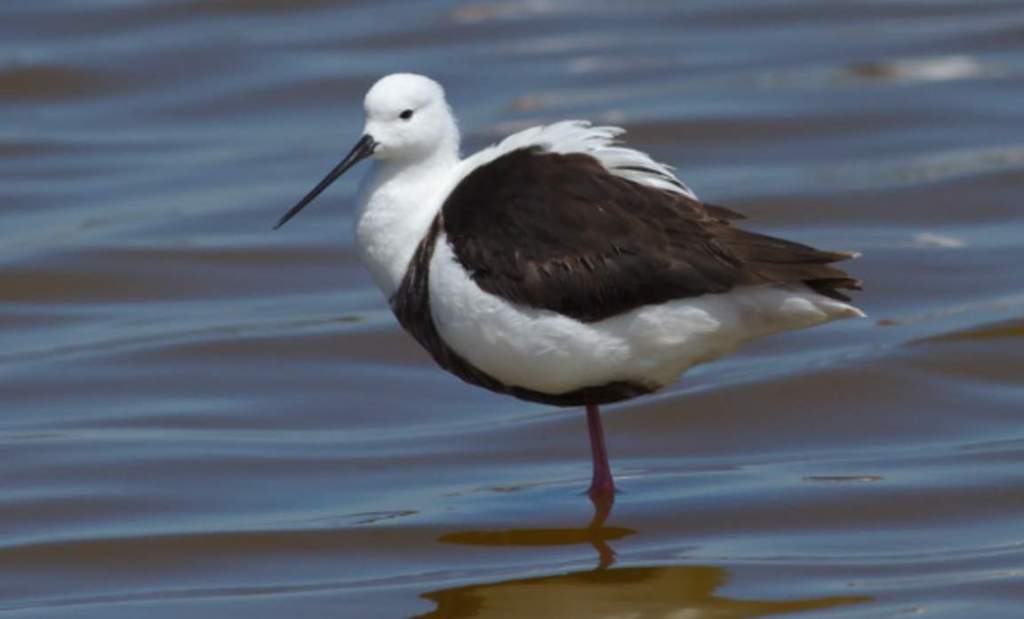Family: A banded stilt (Cladorhynchus leucocephalus) belongs to the family of recurvirostridae, which consists of stilts and avocets.
Habitat: The Banded Stilt is an enigmatic bird seen in dense flocks of thousands in saline swamps and inlets along the South Australian gulfs and in southwestern Australia. Despite this, only a few colonies have been found since 1930. Most of the birds without breast bands in the flocks are probably adults with previously unrecognized non-breeding eclipse plumages. Traditionally, they were thought to be newly bred juveniles.
In spite of its stilt-like appearance, some ornithologists attribute it instead to the flamingo, since it has colonial habits and plain grey-white chicks. Banded Stilts follow a seasonal pattern in their nomadism. During winter and early spring, many move inland on newly filled salt lakes, breeding if flooded pans evaporate slowly enough to expose flat nesting islands while maintaining food supplies.
Through summer and autumn, the birds migrate back to coastal tidal swamps and inlets as the lakes dry up. At all times, banded stilts are colonial. These birds feed in flocks of tens of thousands, rest in close-packed masses on salt pan edges, nest in vast colonies, and fly in compact flocks.

Identification: Both sexes are alike. However, in breeding adults, the head and body are white with a broad chestnut band across the breast and extend down to a black belly. The wings are black with a white trailing edge. The eyes are brown. The bill is black. The legs and feet are pink. Further, non-breeding adults lack a breast band, and their legs are duller. Grey-white is the color of the downy young.
Food: Their diet consists almost exclusively of brine shrimps and related crustaceans which they catch by swimming, wading, and even submerging their heads. Their food is often gathered in close-packed rafts of hundreds or more stilts.
Vocalizations: The call of the Banded Stilt is a yelping note that sounds similar to the Black-winged Stilt, but it is quieter. There are also wheezing calls that resemble plaintive whistles. A barking call from adults can be written as chowk, cow, or sometimes with two syllables as chowk-uk, chuk-uk. Nesting birds also chatter softly and tunefully.

Nest & Breed: The birds nest in massed colonies of thousands between May and December, but mostly during July and September; they also breed after heavy rains. Eggs are laid in soft ground in small depressions; no nest is built.
Eggs: A Banded Stilt lays three to four eggs, which are deep fawn to white with brown and black spots and underlying grey markings, or with twisted black lines on the top and bottom; oval, 55 x 40 mm.
Distribution: Salt lakes and brackish estuaries and inlets in southwestern and central southeastern Australia. Tasmania and central-eastern New South Wales have a few stragglers. Nomadic.
Flight: Flight is fluttering, like an avocet, with shallowly beating wings and legs trailing behind.
Other Names: It is also known as Bishop Snipe and Rottnest Snipe.
Size: A Banded Stilt weighs 220–260 g and measures 385–410 mm in length. Its wingspan measures 55–68 cm.
Races: There are no races.
Read More – Red-headed Honeyeater (Myzomela erythrocephala)







